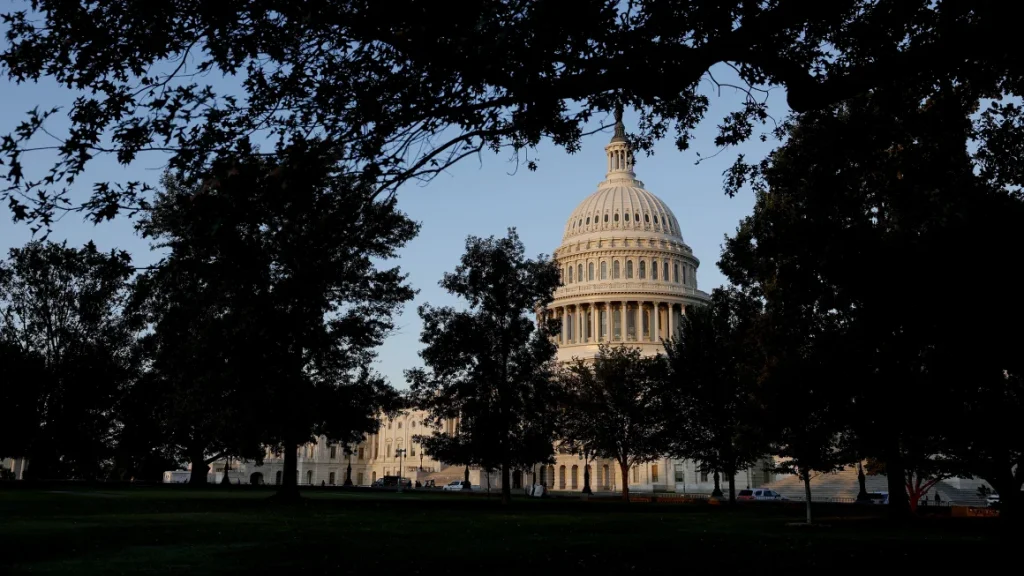US government begins preparations for a partial shutdown with one week until deadline – despite agreement

The clock is ticking toward a September 30 deadline to fund the government, and even with a possible deal to avert a lapse in funding, parts of the US government will start the behind-the-scenes process of preparing for a potential shutdown.
On Sunday, House Speaker Mike Johnson, a Louisiana Republican, laid out in a letter to his members a plan to vote this week and avert a shutdown, and Democratic leaders praised bipartisan negotiations, appearing on board with such a plan barring any last-minute changes.
Still, with roughly a week until the deadline, the standard procedure laying out the steps toward bringing nonessential government functions to a halt will soon get underway for all federal government departments and agencies, an administration official told CNN.
“One week prior to the expiration of appropriations bills, regardless of whether the enactment of appropriations appears imminent, OMB will communicate with agency senior officials to remind agencies of their responsibilities to review and update orderly shutdown plans, and will share a draft communication template to notify employees of the status of appropriations,” according to a document from the White House’s Office of Management and Budget.
That standard guidance will be circulated Monday, seven days before a shutdown could occur.
Every department and agency has its own set of plans and procedures. Those plans include information on how many employees would get furloughed, which employees are essential and would work without pay, how long it would take to wind down operations in the hours before a shutdown, and which activities would come to a halt.
Prior shutdowns have forced the closure of some national park and monument facilities, threatened nutrition assistance to low-income Americans, and caused flight delays.
With Johnson’s letter, lawmakers appear to have an agreement for a short-term stopgap bill, known as a continuing resolution, without unanimous agreement in the Senate, it’s possible for lawmakers to drag out the process up until and beyond the clock striking midnight on October 1.
Should lawmakers fail to pass a funding bill, millions of federal workers and military personnel would be affected by a shutdown.
Some 872,000 federal workers could be furloughed, based on a review of agencies’ latest contingency plans, the majority of which are from September 2023, said Rachel Snyderman, managing director for economic policy at the nonprofit Bipartisan Policy Center.
Another 1.4 million federal employees may have to work without pay, though some of these positions are funded through resources other than annual appropriations, she said. Plus, about 2.1 million military personnel may have to work without pay, though in the 2013 shutdown, Congress passed a law to cover the paychecks of active-duty members.
All federal employees are guaranteed back pay, though contractors are not.
Shutdowns aren’t popular, Snyderman said, noting that lawmakers will soon be returning to their districts to campaign for reelection.
“The polling dictates how nobody looks like a winner, and I think especially in a contentious political election season, a shutdown would do no one any favors,” she said.
Last week’s negotiations centered on the SAVE Act, a GOP-led bill that would require documentary proof of US citizenship to register to vote in federal elections, despite the fact that it is already illegal for noncitizens to vote in federal elections.
Former President Donald Trump and some Republicans have pushed for the SAVE Act to be part of any funding deal, but a vote on that measure failed in the House of Representatives. Trump has publicly called on the GOP to shut down the government if the measure isn’t included, but Republicans do not have the votes to do so.
Last week, Majority Leader Chuck Schumer warned of the consequences of a government shutdown, noting on the Senate floor that “tens of thousands of children across the country could immediately lose access to Head Start,” lending could slow down and border security could be “thrown into chaos.”
However, Social Security benefits would continue to be paid even if the government shuts down.
Even the threat of a shutdown can disrupt the lives of federal employees, who could have to forgo their paychecks.
“Just because the shutdown threat has become commonplace doesn’t mean federal employees aren’t worried,” Doreen Greenwald, national president of the National Treasury Employees Union, which represents about 150,000 government workers, said in a statement. “A shutdown is a political failure that sends shockwaves through the economy, starting with federal employees who may be locked out of work and not get paid.”
The American Federation of Government Employees said its members “are sick and tired of politicians disrespecting our lives and the work we do for the American people.” The federation is the largest federal employee union with 750,000 workers in the federal government and District of Columbia government.
“We have one simple message for Members of Congress: stop the politics, perform the most basic function of your job as a legislator, and fund the government,” the federation’s national president, Everett Kelley, said in a statement.
For his part, President Joe Biden urged Congress to pass the short-term bill.
“It’s important we get it done,” he said during a Friday Cabinet meeting. “It’s the only path forward and it’s by working across the aisle.”


